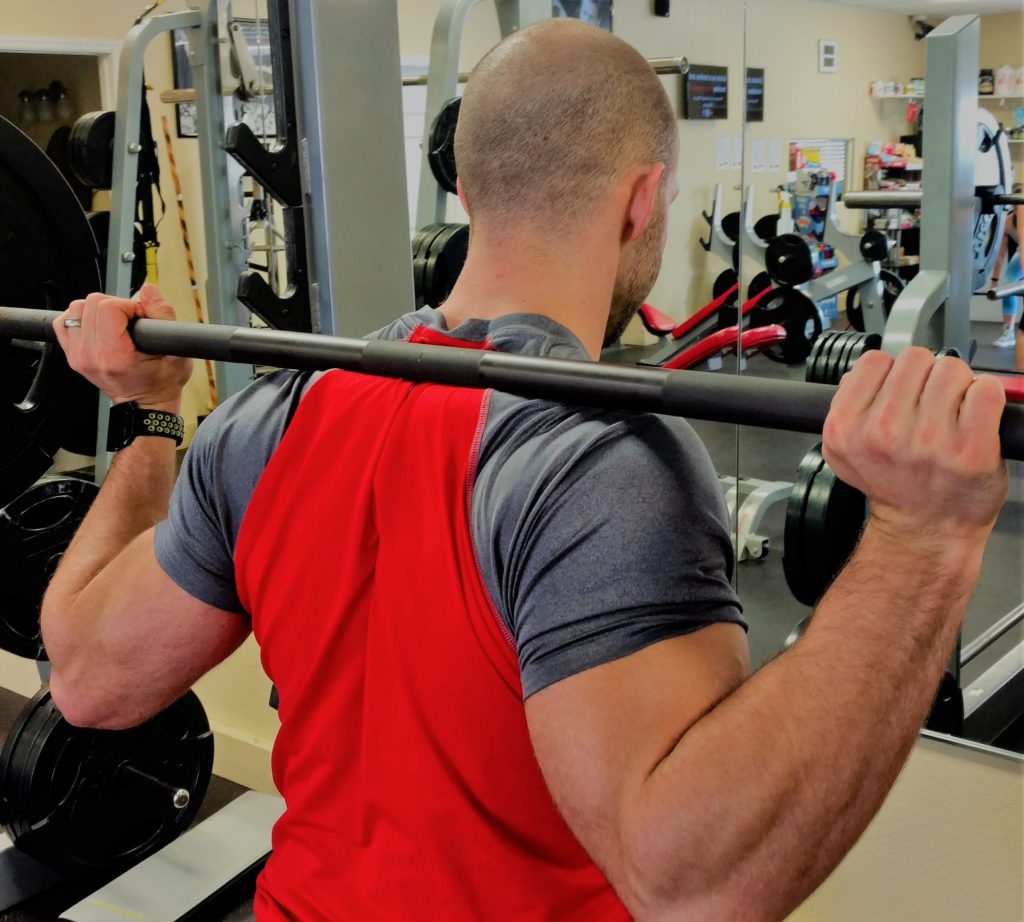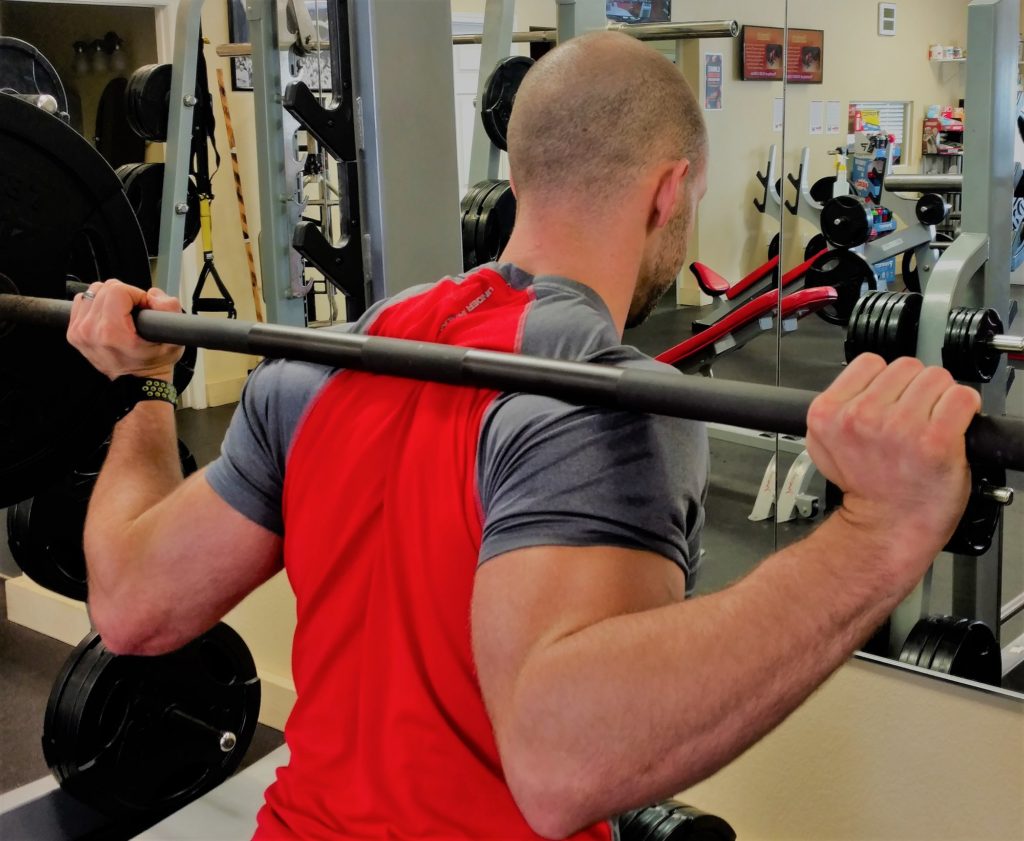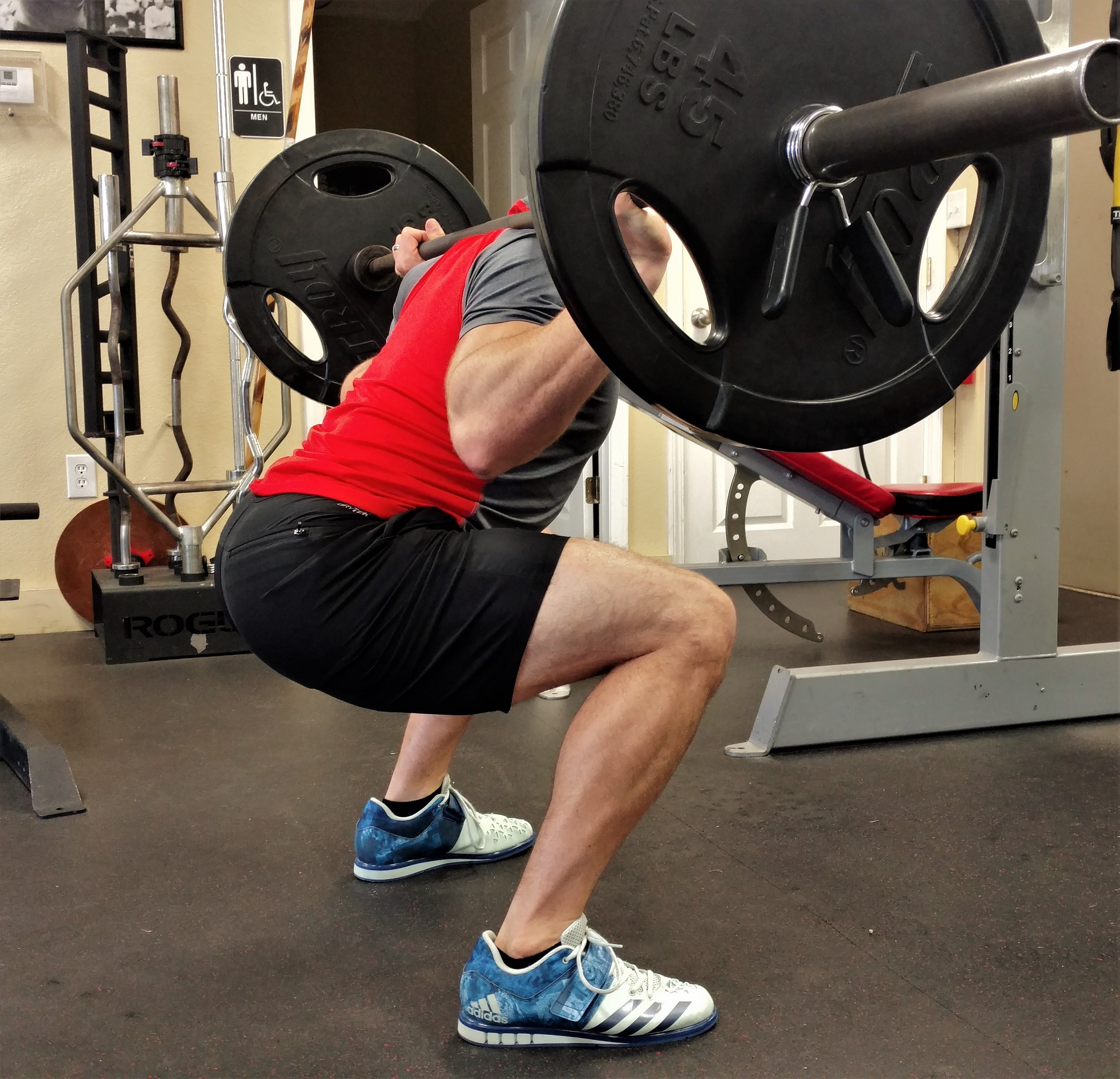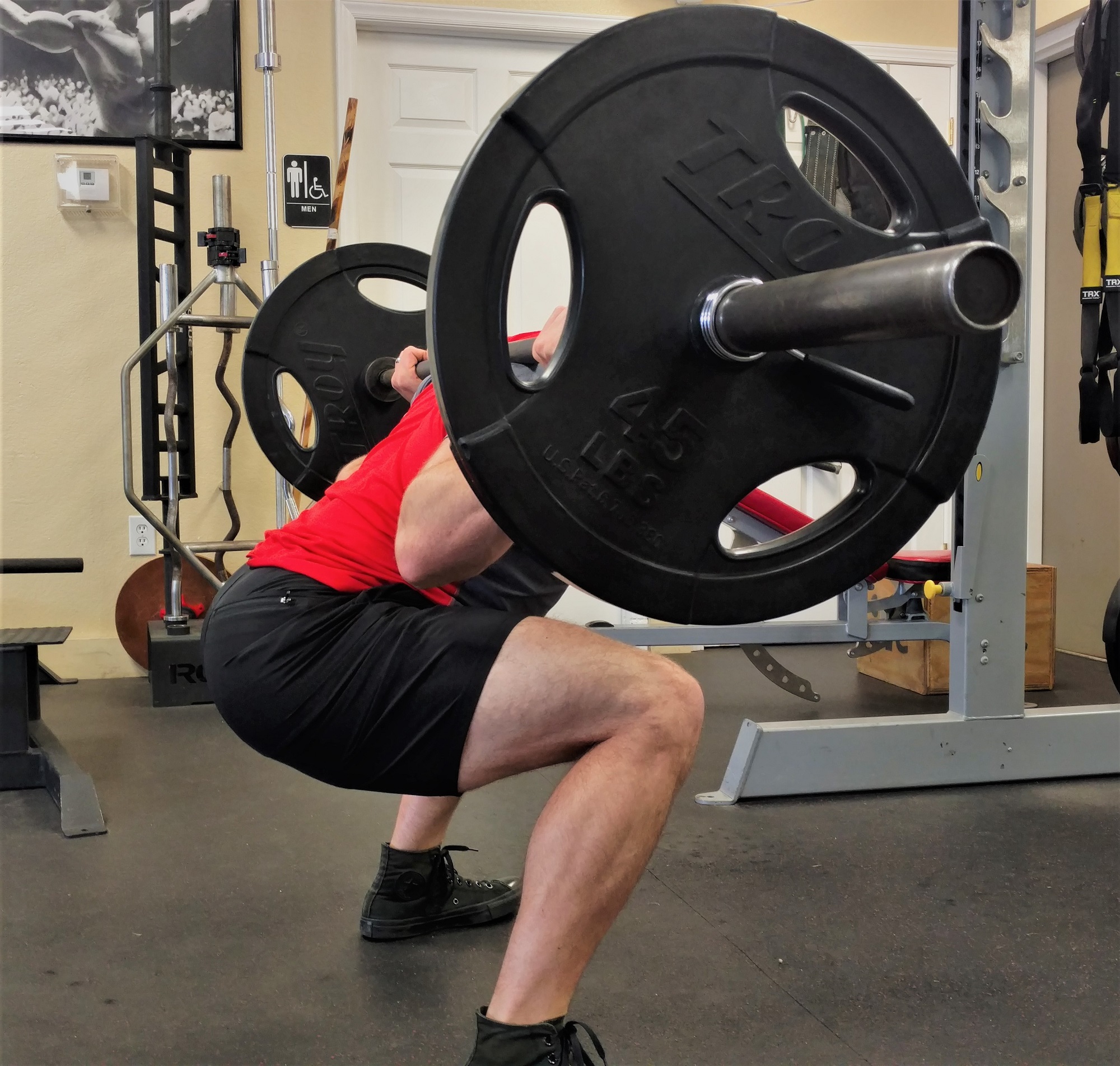I used to have a coach who would say that deep squats would cure anything. Though obviously not completely true, squats do much more than one would imagine. The primary objective of this article is to present information about the biological, hormonal, and physiological response of the body to the back squat.
The back squat can and should be used to produce power, develop the core, and increase neuromuscular transfer in sports.
Squatting is a multi-joint movement that encompasses the entire body. Since the muscle groups primarily utilized in the squat—quadriceps and posterior chain—are the largest in the body, they are better able to expend many calories; thus, people who want to burn calories and lose weight would benefit from the squat.
Large multi-joint movements are also one of the components that naturally increase testosterone. Heavy resistance, multi-joint movements have been proven to increase serum testosterone, though mostly in young men (1). Why is this important? Without testosterone the body cannot build muscle. Though the increase is not as astronomical as anabolic steroids, it’s beneficial nonetheless.
In case some women may be wondering, heavy squatting and other multi-joint movements will not cause them to become a muscular bodybuilder. You will not wake up one day, after squatting with 10lbs on either side of the bar, like Starla on Napoleon Dynamite. I actually wish it were that easy. But, most women just simply do not have the natural genetic makeup to be as muscular as men. Notice, I said natural, which does not include anabolic steroids.
Anyways, the posterior chain muscle group (hamstrings, gluteals, and spinal erectors) has been identified as the main contributor to the success of the squatting movement. Though the posterior chain is the main contributor, the quadriceps muscles are often not fully utilized, making their use overly compensatory. Many people deem the hamstrings and gluteals as primary muscle groups stimulated in the squat but fail to use their full potential.
Weakness in the posterior chain can lead to over-compensation with the quadriceps.
Squatting is a full body movement and requires the entire body to execute. However, many do not know how to use their entire body in the back squat. Many lifters will unknowingly deactivate a part of the body—e.g. upper back or the core—by merely relaxing when they should be contracting. Using the entire body increases caloric burn and the amount of weight lifted while maintaining proper form. Injuries will also be prevented if the whole body is used to support the weight.
The back squat is also very beneficial for the athlete in every sport since athletic movements require control and coordination of the total body. Training the body to use all muscles available will help transfer this neuromuscular activation to the field or court.
The body's core is critical to the success of the squat. Without a strong stable core, one cannot increase weight in the squat without injury. While the squat increases core rigidity, it should not be the sole means used to strengthen the core. Because the squat can be done with high intensity, increasing the core’s ability to withstand resistance can develop strength, power, speed, and control. Having a strong core leads to improvements in other exercises and everyday life.
Before you squat...
- Make sure the floor is level.
- Chalk the bar, and your shirt, to keep it from sliding.
- Use clips/clamps/collars to keep the weights from moving and messing up your balance and back.
- Warmup your hamstrings, GLUTES, quads, hips, abs, lower back, and stretch the shoulders. Improper warmup can lead to injury or an inefficient lift. View my blog on warmup techiques.
Bar placement
The bar can be placed in a low-bar or high-bar position. The best position will depend on your body's mechanics and proportions.
Body mechanics:
First, muscle and joint stiffness can impact the position of the bar. Shoulder, pec, or wrist stiffness can be a limiting factor in which bar placement will work best for your body. If you are overly stiff, then a squatting with a bar on your back may not work at all. But, typically with general stiffness, a high bar position will work best because there is less stretch on the tissues and muscles.
Hip flexor, hamstring, glute, quad, and low back tightness can also inhibit proper positioning, especially in the bottom of the squat. Inflexibility can cause compensation, asymmetry, and/or injury. E.g. the lower back rounds in the bottom of the squat because the hips/hamstrings are too tight.
Ankle flexibility is an often-overlooked consideration when choosing the best bar placement. High-bar squatters need more ankle mobility because the knee may travel forward toward the toes—this is not a dangerous maneuver if the knees are generally healthy. However, the heels MUST remain in contact with the ground. If the heel comes up, then you may need to sit farther back in your squat. Plus, since high-bar squatters have shorter legs, this usually prevents the knees from going over the toes anyway.
Second, anatomy can also be a factor to consider with bar placement. The spinal vertebra C7 is often protruding in many individuals; thus, a high bar placement may be unduly painful. Low-bar position may help you. But, if your body’s proportions favor a high-bar, then you can add a pad on the bar to reduce the pressure.


Proportions:
If you have longer legs relative to torso length, then you will perform better with a low-bar position. However, the high-bar placement would be better if you have shorter legs relative to torso length.
But, if your legs and torso are relatively the same in proportions, then you can experiment with both to see which is more comfortable.
Muscular dominance is also an interesting aspect to consider when experimenting with a low-bar or high-bar. Those with shorter legs relative to the torso will traditionally be quad dominant in their squat. Those with longer legs will be posterior chain (glutes, hams, and low back) dominant.
The high-bar placement puts the body in a more upright position when squatting. This leads to less hip involvement and more knee involvement which is a recipe for quad dominance.
Conversely, low-bar squatters slightly lean forward as they squat, but the spine is still neutral. They sit back farther than those with shorter legs, so they can get the depth. This movement recruits the glutes and hamstrings more dominantly.
Hand placement
Hand placement is slightly controversial, but it, honestly, all depends on flexibility and goals. If you are very stiff, then you may need to spread your hands as far as you can get them. Low-bar position is usually a wider than a high-bar (again, unless you are super stiff). For athletes and those that want to increase power and strength, I would suggest the closest grip possible to a fists length from shoulder width.
The relatively compact grip allows the body to contract the lats, upper back, and grip harder to make the lift stronger and safer.
Footwear
Footwear depends on bar placement, comfort, and ankle mobility. Low-bar, posterior chain dominant squatters will work better with a flat bottom shoe, almost like bare feet. High-bar squatters can wear flat bottom shoes as well, unless they have inhibited ankle mobility (i.e. the heel rises off the floor as they squat). In this case, elevating the heel with an Olympic lifting shoe may be beneficial. The squat is a weight-bearing exercise, and among this discussion we are talking about really weight-bearing. Because of the heavy weight, a shoe with arch support may hinder functionality (plus, it may reduce the lifespan of the shoe).

Olympic lifting shoes (heels elevated), high-bar position

Flat shoes, low-bar position
Running shoes are not great for squatting because they have too much cushion, which reduces the body’s ability to apply force into the ground—an essential purpose of power. Additionally, running shoes often cause the foot to shift to the outside of the shoe because the lifter tries to spread the floor apart with his/her feet (more on this below). This leads to improper foot and knee placement and potential injury.
However, the footwear is a preference. Personally, I would recommend experimenting with different types of shoes to see which one you like. You may discover a new type of shoe that increases your strength.
Side note:
It is not uncommon for me to change shoes multiple times within a workout depending on the exercise.
Be sure your footwear of choice is secure and can grip the floor.
Read Part 2References:
Baechle, Thomas R., and Roger W. Earle. “Endocrine Responses to Resistance Exercise.” Essentials of Strength Training and Conditioning. 3rd ed. Champaign, IL: Human Kinetics, 53-54. 2008. Print.
